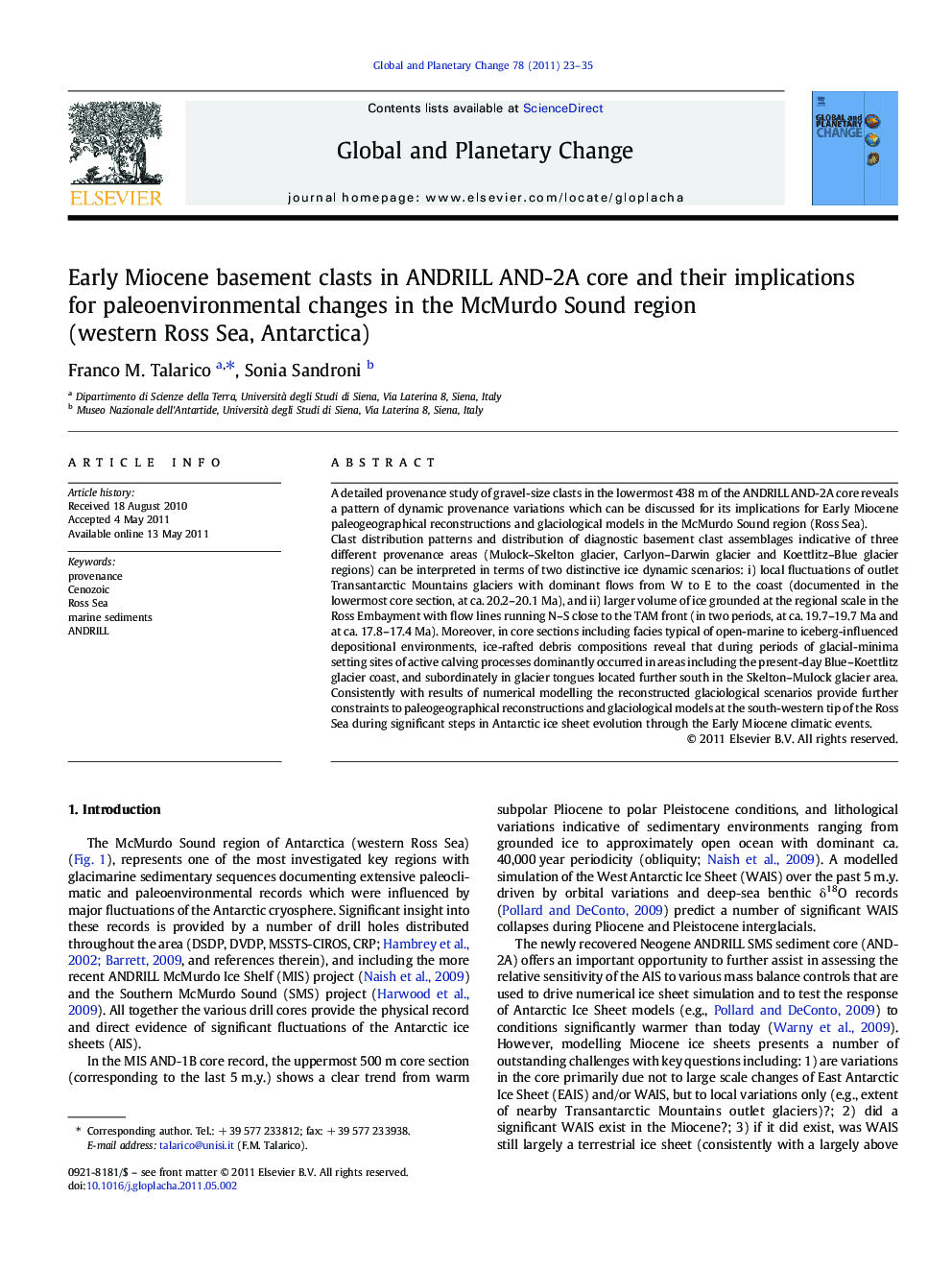| Article ID | Journal | Published Year | Pages | File Type |
|---|---|---|---|---|
| 4463796 | Global and Planetary Change | 2011 | 13 Pages |
A detailed provenance study of gravel-size clasts in the lowermost 438 m of the ANDRILL AND-2A core reveals a pattern of dynamic provenance variations which can be discussed for its implications for Early Miocene paleogeographical reconstructions and glaciological models in the McMurdo Sound region (Ross Sea).Clast distribution patterns and distribution of diagnostic basement clast assemblages indicative of three different provenance areas (Mulock–Skelton glacier, Carlyon–Darwin glacier and Koettlitz–Blue glacier regions) can be interpreted in terms of two distinctive ice dynamic scenarios: i) local fluctuations of outlet Transantarctic Mountains glaciers with dominant flows from W to E to the coast (documented in the lowermost core section, at ca. 20.2–20.1 Ma), and ii) larger volume of ice grounded at the regional scale in the Ross Embayment with flow lines running N–S close to the TAM front (in two periods, at ca. 19.7–19.7 Ma and at ca. 17.8–17.4 Ma). Moreover, in core sections including facies typical of open-marine to iceberg-influenced depositional environments, ice-rafted debris compositions reveal that during periods of glacial-minima setting sites of active calving processes dominantly occurred in areas including the present-day Blue–Koettlitz glacier coast, and subordinately in glacier tongues located further south in the Skelton–Mulock glacier area.Consistently with results of numerical modelling the reconstructed glaciological scenarios provide further constraints to paleogeographical reconstructions and glaciological models at the south-western tip of the Ross Sea during significant steps in Antarctic ice sheet evolution through the Early Miocene climatic events.
Research highlights► Clast petrofacies in AND2-2A core reveal a pattern of dynamic provenance changes. ► Local fluctuations of outlet glaciers with W-E flows are documented at ca. 20 Ma. ► Larger volume of ice with N-S flow lines are recorded at ca. 19.7 Ma and 17.8 Ma. ► The provenance model could imply fluctuations of the West Antarctic Ice Sheet.
